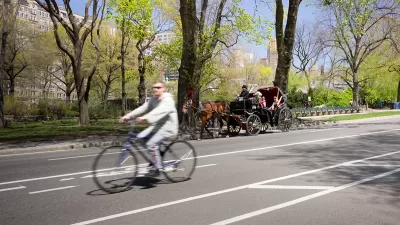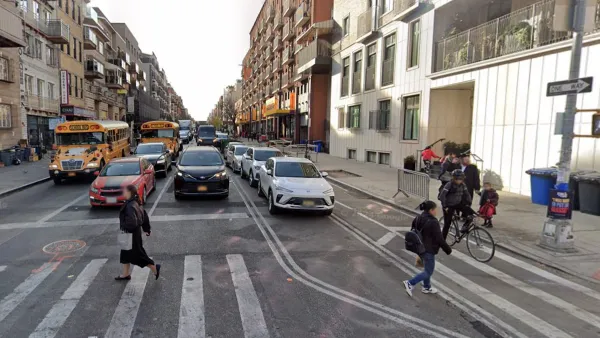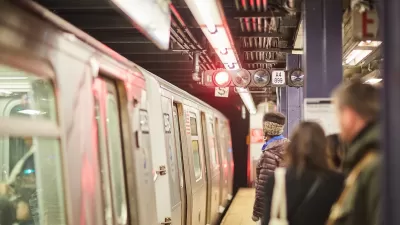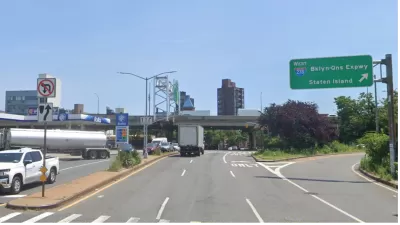A recent study by the New York City Department of Transportation on buffered bike lane interventions showed maintained traffic speeds while cyclist safety increased.

One of the biggest barriers to implementing bike lanes in certain municipalities is their perception of slowing down car traffic. However, according to a recent study by the New York City Department of Transportation reported on by Eric Jaffe at CityLab, these urban interventions actually did not reduce car speeds, but maintained them while increasing cyclist safety.
One of the interventions studied was the 2008 and 2009 Eighth Avenue bike lanes, between 23rd and 34th streets. According to Jaffe, before the treatment, "the avenue carried four travel lanes, one parking lane, one parking-rush hybrid, and an unprotected bike lane. Again, by narrowing the lanes, all five were preserved (though the hybrid became a parking lane) even as riders gained additional protection."
With the protected bike lanes in place with a buffer, DOT measured a 14 percent overall reduction in daytime travel times along the corridor. Similar results were found along many other corridors where protected bike lanes were created.
A DOT spokesperson shared with CityLab that another street redesign was adding left-turn pockets, contributing to the maintained traffic speeds. According to the spokesperson, originally, "cars turned left from a general traffic lane; in the new one, they merged into a left-turn slot beside the protected bike lane. This design has two key advantages: first, traffic doesn't have to slow down until the left turn is complete, and second, drivers have an easier time seeing bike riders coming up beside them."
FULL STORY: When Adding Bike Lanes Actually Reduces Traffic Delays

Maui's Vacation Rental Debate Turns Ugly
Verbal attacks, misinformation campaigns and fistfights plague a high-stakes debate to convert thousands of vacation rentals into long-term housing.

Planetizen Federal Action Tracker
A weekly monitor of how Trump’s orders and actions are impacting planners and planning in America.

San Francisco Suspends Traffic Calming Amidst Record Deaths
Citing “a challenging fiscal landscape,” the city will cease the program on the heels of 42 traffic deaths, including 24 pedestrians.

Defunct Pittsburgh Power Plant to Become Residential Tower
A decommissioned steam heat plant will be redeveloped into almost 100 affordable housing units.

Trump Prompts Restructuring of Transportation Research Board in “Unprecedented Overreach”
The TRB has eliminated more than half of its committees including those focused on climate, equity, and cities.

Amtrak Rolls Out New Orleans to Alabama “Mardi Gras” Train
The new service will operate morning and evening departures between Mobile and New Orleans.
Urban Design for Planners 1: Software Tools
This six-course series explores essential urban design concepts using open source software and equips planners with the tools they need to participate fully in the urban design process.
Planning for Universal Design
Learn the tools for implementing Universal Design in planning regulations.
Heyer Gruel & Associates PA
JM Goldson LLC
Custer County Colorado
City of Camden Redevelopment Agency
City of Astoria
Transportation Research & Education Center (TREC) at Portland State University
Jefferson Parish Government
Camden Redevelopment Agency
City of Claremont





























